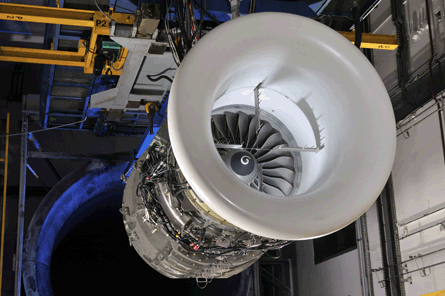Snecma is examining additional markets for the PowerJet SaM146 engine following its certification in Europe, as it aims to produce up to 50 of the powerplants in 2011.
The manufacturer has designed the SaM146 for the Sukhoi Superjet 100, but Snecma chief executive Philippe Petitcolin says the company is looking at other new programme options.
PowerJet secured European Aviation Safety Agency certification for the engine on 23 June. Russian certification of the SaM146 is being carried out in parallel.
"It's a very robust engine. We passed all the certification tests without any major problems. We didn't have to redesign any part. Some tests were extremely difficult to perform, and we did very well," says Petitcolin, pointing out that during the blade-off test the engine lost less than 5% of thrust.
He adds that the fuel-burn and other performance criteria for the engine are "in the specification, exactly where they're supposed to be".
PowerJet plans to build 13 serial production engines this year, he says, but the company "hopes for 50" in 2011. Deliveries of the first production engines are due to start by the end of July.
 |
|---|
© PowerJet |
The first two Superjets are to be delivered this year, says Petitcolin, at least one of which will be for Armavia.
No additional tests are needed for Russian approval, says SaM146 programme director Yuri Basyuk, but the results of tests already performed will be checked to ensure the engine meets stricter Russian criteria in specific areas, such as icing response. Basyuk believes, however, that the certification is essentially "a formality".
PowerJet's Russian partner, NPO Saturn, has outlined plans to increase production to 84 engines in 2012 and 150 by 2014. But the manufacturer is hoping to secure additional state funding of Rb8.4 billion ($268 million) to ensure that it has the tooling and capabilities necessary for ramp-up, after a lack of resources held up engine production and delayed the Superjet test programme.
Saturn chief Ilya Fyodorov says the company is planning to reduce the weight of the engine and adds: "We're also going to increase the thrust and approach the level of 20,000 cycles of engine life.
"Currently it's 16,000 cycles. It's the first Russian engine to approach these parameters on-wing. These are very good results and we're very proud of that."
Source: Flight International























